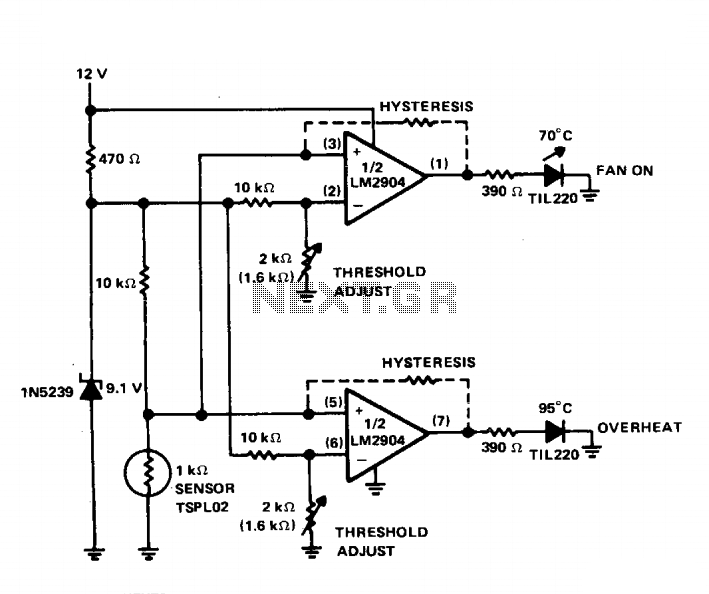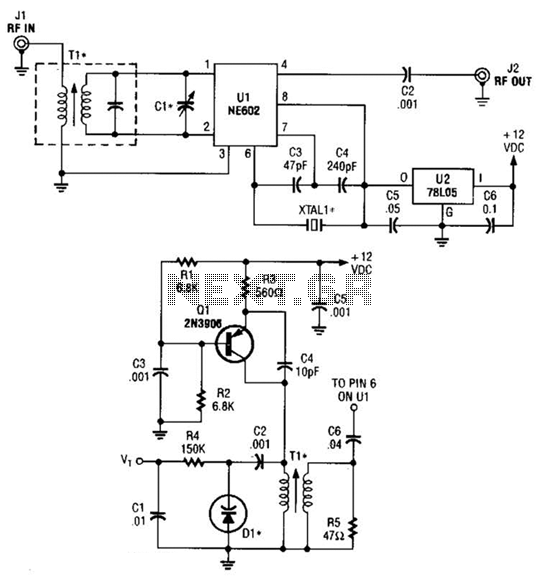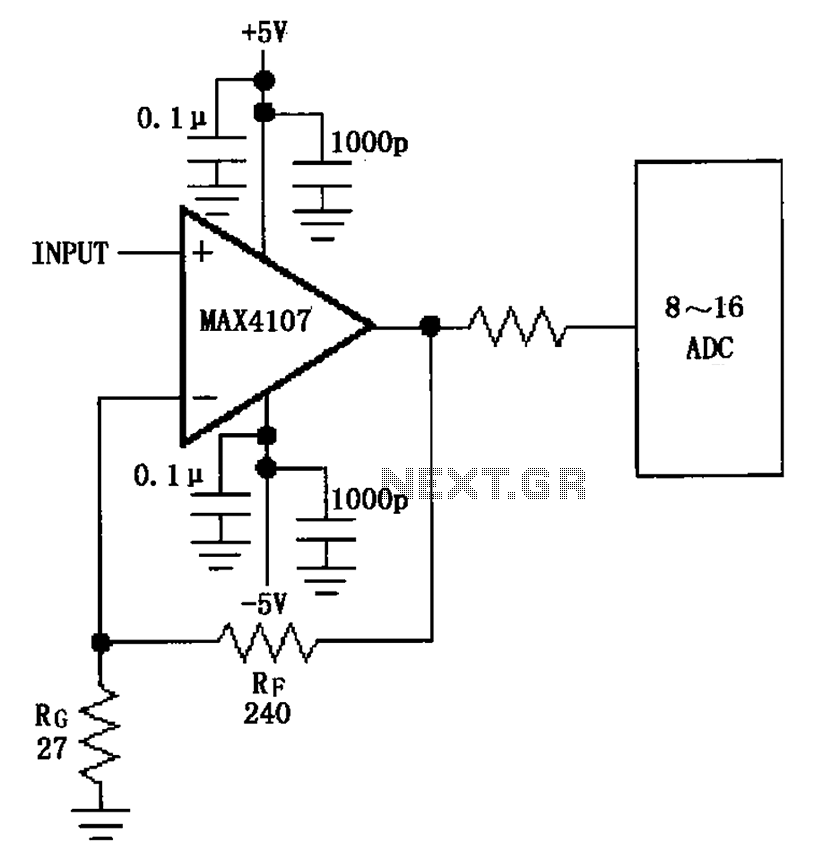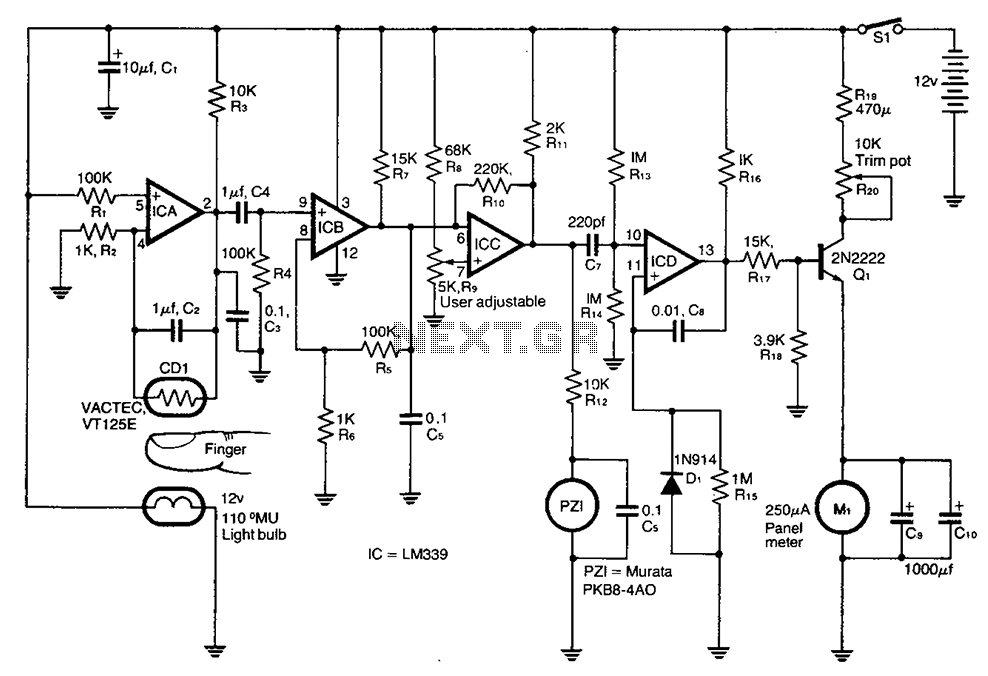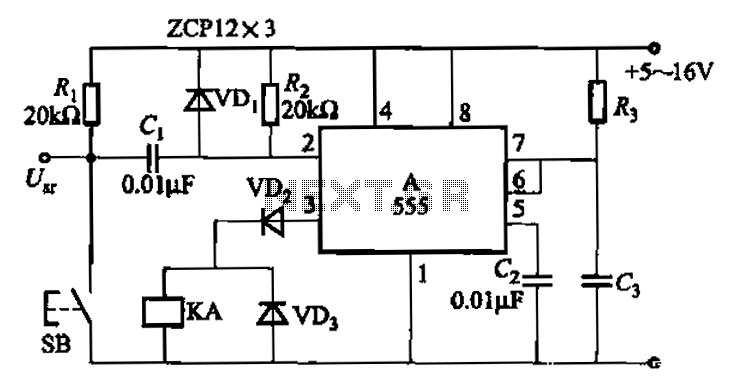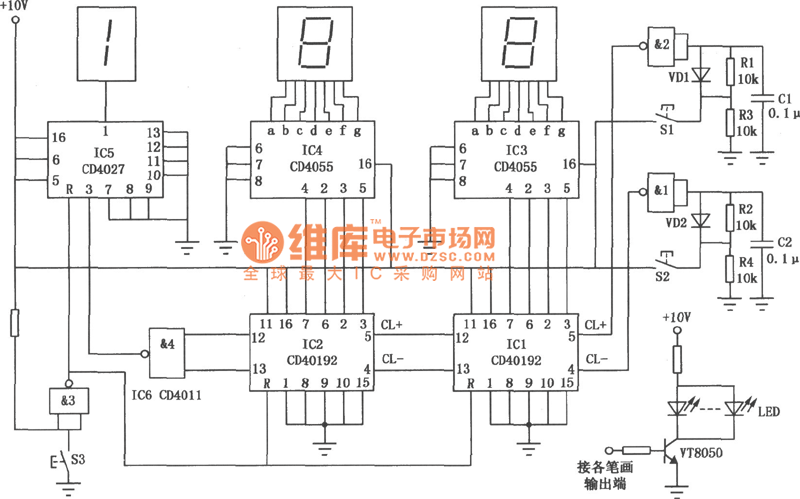
Keyer dimmer table lamp circuit
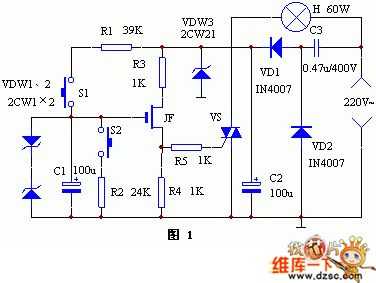
The keyer dimmer table lamp utilizes two touch buttons to adjust the light intensity. When one button is touched, the light dims from a strong brightness, while the other button increases the brightness from a dim state. The working principle of this circuit is illustrated in diagram 1. The capacitance buck DC power supply consists of components VD1, VD2, C2, and C3.
The keyer dimmer table lamp is designed to provide adjustable lighting through a user-friendly interface featuring two touch-sensitive buttons. The circuit operates on a capacitance buck converter principle, which allows for efficient voltage regulation and dimming capabilities.
The touch buttons serve as input controls; one button is designated for dimming the light, while the other increases the brightness. When the dimming button is activated, it triggers a reduction in the output voltage supplied to the lamp, causing the light to gradually weaken. Conversely, activating the brightness button increases the output voltage, resulting in a brighter illumination.
The circuit's core components include diodes VD1 and VD2, which are responsible for rectifying the AC input voltage to a suitable DC voltage level. The capacitors C2 and C3 play a crucial role in smoothing the rectified output, ensuring stable operation and minimizing voltage fluctuations. This arrangement allows for a seamless transition between different brightness levels, enhancing the user experience.
The overall design emphasizes efficiency and reliability, making it suitable for various applications where adjustable lighting is desired, such as in living rooms, bedrooms, or workspaces. The simplicity of the touch interface combined with the effective dimming mechanism offers a modern solution to traditional lamp controls.Keyer dimmer table lamp adopts two touch buttons to adjust the light. The light changes weaken from strong when peopletouch one of the buttons, and it changes strong from weaken when peopletouch the other button. Working principle The principle of this circuit is shown in diagram 1. Capacitance buckDC power supply is composed of VD1, VD2, C2 and C3.. 🔗 External reference
The keyer dimmer table lamp is designed to provide adjustable lighting through a user-friendly interface featuring two touch-sensitive buttons. The circuit operates on a capacitance buck converter principle, which allows for efficient voltage regulation and dimming capabilities.
The touch buttons serve as input controls; one button is designated for dimming the light, while the other increases the brightness. When the dimming button is activated, it triggers a reduction in the output voltage supplied to the lamp, causing the light to gradually weaken. Conversely, activating the brightness button increases the output voltage, resulting in a brighter illumination.
The circuit's core components include diodes VD1 and VD2, which are responsible for rectifying the AC input voltage to a suitable DC voltage level. The capacitors C2 and C3 play a crucial role in smoothing the rectified output, ensuring stable operation and minimizing voltage fluctuations. This arrangement allows for a seamless transition between different brightness levels, enhancing the user experience.
The overall design emphasizes efficiency and reliability, making it suitable for various applications where adjustable lighting is desired, such as in living rooms, bedrooms, or workspaces. The simplicity of the touch interface combined with the effective dimming mechanism offers a modern solution to traditional lamp controls.Keyer dimmer table lamp adopts two touch buttons to adjust the light. The light changes weaken from strong when peopletouch one of the buttons, and it changes strong from weaken when peopletouch the other button. Working principle The principle of this circuit is shown in diagram 1. Capacitance buckDC power supply is composed of VD1, VD2, C2 and C3.. 🔗 External reference
Warning: include(partials/cookie-banner.php): Failed to open stream: Permission denied in /var/www/html/nextgr/view-circuit.php on line 713
Warning: include(): Failed opening 'partials/cookie-banner.php' for inclusion (include_path='.:/usr/share/php') in /var/www/html/nextgr/view-circuit.php on line 713
